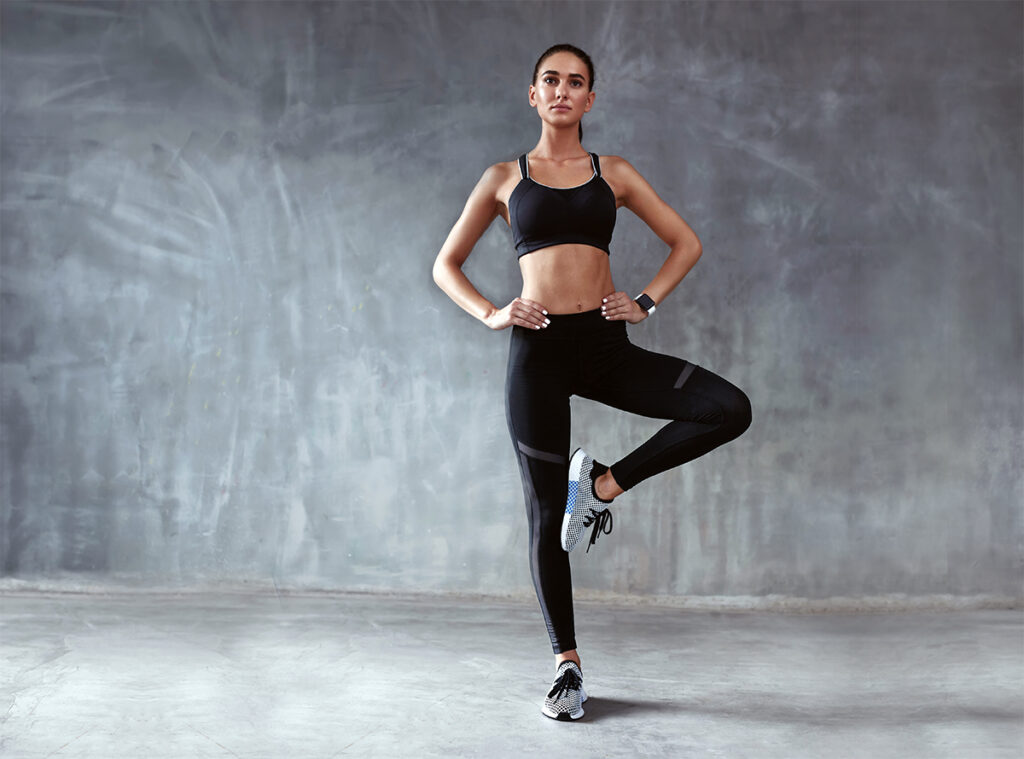Balance is one of the key fitness components that is all about your nervous system, brain and how well they work with your muscles. Other neurological fitness components include coordination, speed, agility and coordination.
Balance is vital in most sports as many activities take place on one leg or with your weight heavily shifted onto one side of your body more than the other. For example, running, tennis, basketball, and baseball, all require balance. It’s oft-forgotten, but balance is key. Even if you don’t do sports. Because basically all forms of movement rely on it.
You need good balance for virtually every day-to-day activity, including walking, getting out of a chair, walking down steps, and bending over to tie your shoelaces. To put it another way, good balance gives you smooth moves and protects you from falling over. Dancing and martial arts are all about balance.
Then there’s that other thing, that afflicts us all. Aging. Around mid-life, balance ability starts to deteriorate and increasingly impacts quality of life. In a 2022 study on adults over 50, the inability to balance on one leg for 10 seconds was associated with almost double the risk of death from any cause within 10 years.1
The Benefits of Improving Balance
Improving your balance, can greatly enhance your movement quality, efficiency and economy, help prevent injuries, and even make you a better athlete or dancer.23
You can do specific balance training exercises, such leg balancing exercises or adapt the exercises you’re already doing. As with any new exercise program, be sure to speak to your doctor first, and have something to hold on to or perform the exercise with a spotter. Balance exercises are normally quite low intensity, so you can easily do some at the beginning or end of your normal workout, or incorporate them into your daily routine.
How to Improve Your Balance
There are several ways you can incorporate balance training.
- Exercise one limb at a time. Performing exercises using just one arm or leg at a time will mean you have to work harder than usual to remain upright. Unilateral exercises include lunges and single-arm biceps curls. They have the benefit of training each side individually, which will also help fix muscle imbalances between the right and left side of the body.
- Reduce your base of support. If the exercise allows, move your feet or arms closer together or support your weight on one leg at a time (e.g. diamond push-ups, single-leg squat). A balance exercise you can start with is the stork stand (standing on one leg with your hands on your hips) and work up to holding your balance for 30 seconds.
- Close your eyes. Balancing is relatively easy when you can see and have a fixed point on which to concentrate, but as soon as you close your eyes you have to rely on your other senses instead. Closing your eyes makes something as simple as standing on one leg much more challenging. This technique tends to be practiced in the fields of martial arts and dance. You can progress the stork stand exercise by closing your eyes.
- Use training tools. There is various equipment that challenges balance that you can incorporate into your workout. Balance training tools include stability balls, BOSU balls (half-circle stability ball), wobble boards, medicine balls, and foam rollers. You can progress balancing on one leg further by performing it on a slightly unstable surface such as an airex pad (air-filled cushion) with eyes open, then progress it again to eyes closed.
- Tai chi and yoga involve many exercises that help improve balance, and are perfect for rest days between your main workouts.4
- Strength training. A strong body and a particularly a strong core, help improve balance and stability. And it’s a virtuous circle. Being stronger makes you more balanced and stable, and being more balanced and stable improves workout performance so you become stronger. Furthermore, most free-weight exercises have a significant balance requirement – especially those performed standing or with dumbbells.


